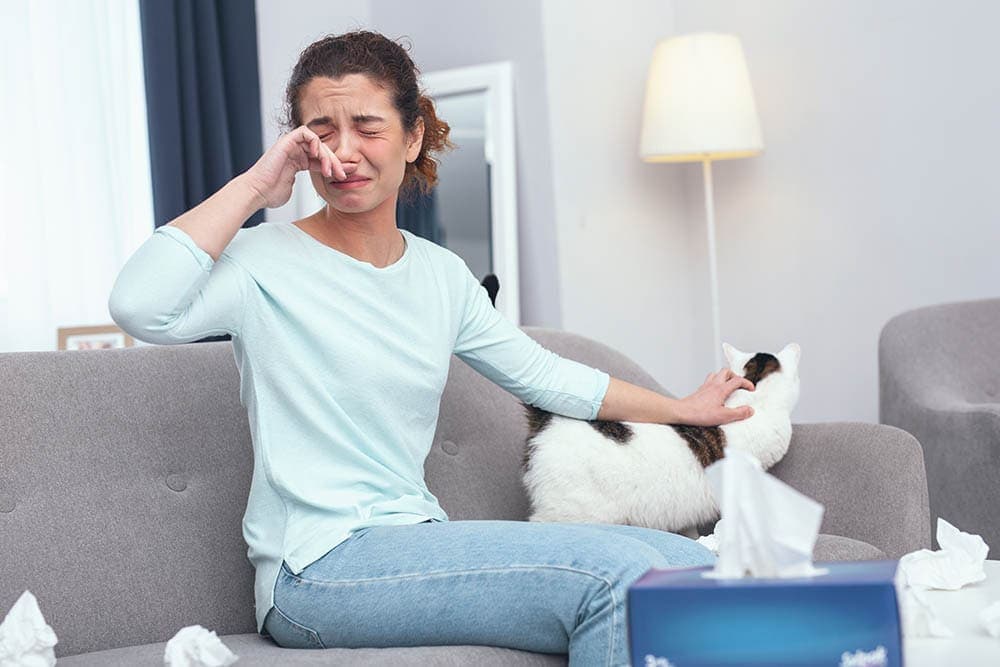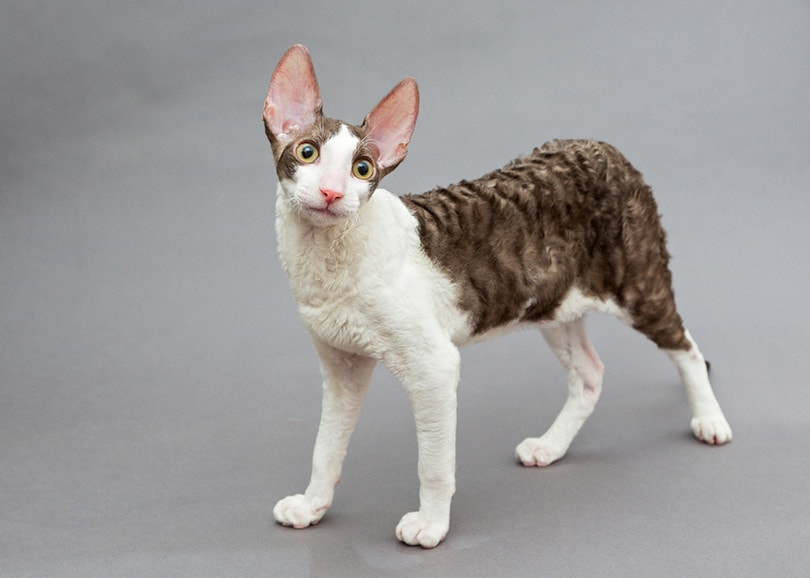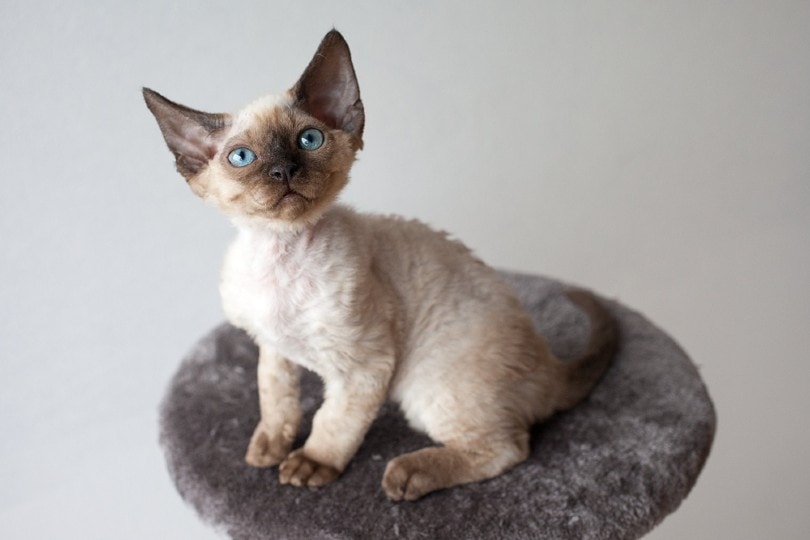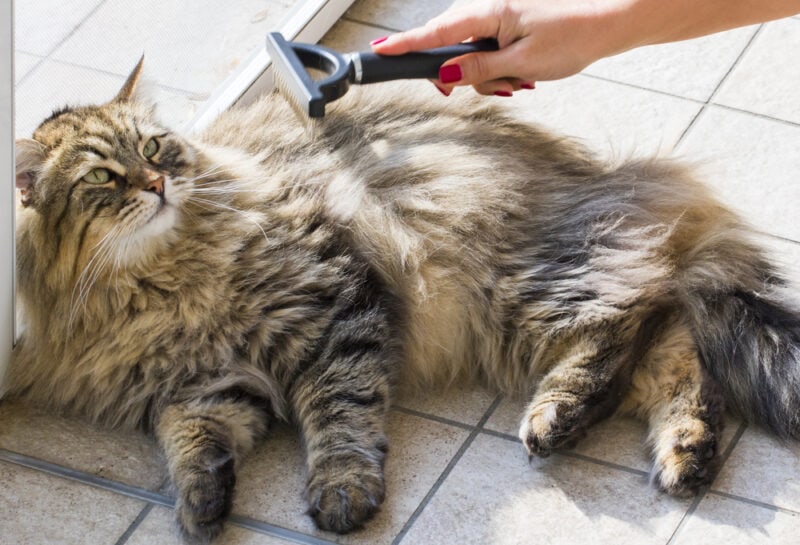
Do your eyes itch and your nose run every time you come into contact with a cat or a person who owns cats? If so, you are probably allergic to cats. But it is not the mere presence of the cat that causes your allergy nor is it their hair, but rather the proteins found in the cat’s dander, urine, and saliva. That said, cat hair floats in the air, making it the primary means of transport for those proteins. Allergen-carrying cat hair will end up in the environment on the objects that you come in contact with.
Hypoallergenic cats do not exist—they are a myth! All cats can produce allergies in humans, but some pets produce more allergens than others.1 This is why some individuals develop an allergic reaction to certain cats and not all of them.
In cats, the dominating allergenic protein is produced by the sebaceous glands in the skin and the salivary glands.
Why Am I Allergic to Some Cats and Not Others?
An allergen is a harmless substance that the immune system sees as an enemy, triggering an allergic reaction. There are 10 known cat allergens that cause allergies in humans. The most commonly encountered is the protein secretoglobin Fel d 1. It’s omnipresent in the United States (even in households that do not own cats)2 and is produced by the cat’s anal, salivary glands, and sebaceous glands. Intact or unneutered males produce more allergens than neutered cats.
All 10 proteins accumulate on your cat’s fur when they groom themselves. These remain on their fur and are released into the environment as your cat sheds hair and dander. Allergic people who come into contact with them will have a reaction.
Therefore, regardless of the cat breed or coat length, these pets have the potential to trigger an allergy.

What Are the Signs of a Cat Allergy?
Cats love to be clean! They groom themselves all day and thus fill their fur with allergens. Hair and dander are lightweight and end up in the environment on various objects that the cat comes into contact with. Allergens are also persistent—they have even been discovered in houses where no cat has lived for several years.
If you are allergic to cats, the allergens that reach the lungs combine with the antibodies that your immune system produces and cause the following clinical signs and symptoms:
Signs and symptoms usually appear shortly after coming into contact with the respective allergen. Other important signs of cat allergy are fatigue (especially manifested in the case of untreated allergies) and continuous coughing. Symptoms such as chills, fever, nausea, or vomiting are usually related to other health conditions rather than allergies.
The 7 Cats That Produce Less Allergens
Although there are no hypoallergenic cats, certain breeds produce fewer allergenic proteins than others. Here are seven cat breeds that are considered hypoallergenic.
1. Sphynx

This breed is known for being mostly hairless, so the allergenic proteins in their saliva cannot be trapped in their non-existent fur. That said, they will still groom themselves and get saliva on their skin.
2. Cornish Rex

Cats’ hair is usually arranged in three layers: the outer coat, the middle layer, and the undercoat. The Cornish Rex cat only has an undercoat, which means they have much less hair than other cats, so the risk of causing an allergic reaction is lower.
3. Devon Rex

This cat breed has the same type of fur as the Cornish Rex. The difference between these breeds is that Devon Rex cats have even less hair and do not shed much.
4. Oriental

Oriental cats have short, fine fur and shed very little. For best results, bathe your Oriental cat regularly to help remove loose hair and thus reduce the amount that they shed around the house.
5. Russian Blue

Although they have a rich coat, Russian Blue cats produce less Fel d1 protein. So, if you are thinking of getting a cat but are allergic, this may be a suitable breed for you!
6. Balinese

As with the Russian Blue cat, the Balinese cat produces less Fel d1 protein than most other cats.
7. Siberian

If you want a cat with rich and long fur that will not cause you to have so many allergic reactions, choose the Siberian cat because it produces less Fel d1.
How to Reduce a Cat’s Allergen Levels
Here are a few tips and tricks to help reduce your cat’s allergen levels:
Conclusion
A significant percentage of the population suffers from cat allergies, and it is common for allergic cat owners to have to give up their dear friends because of this. All cats, regardless of breed, can cause allergies. The primary cause of allergic reactions is the proteins found in the sebaceous glands of cats’ skin. There are 10 allergenic proteins in cats, but Fel d1 is the most common one that produces allergies in humans.
Cat hair and dander are the elements that lead to allergic reactions. The hair itself is only a vector for the allergenic proteins found in dander, saliva, and urine. Intact males are also considered more allergenic than neutered cats.
To reduce the allergens around you, bathe your cat regularly, vacuum the floors often, change the bedding frequently, and neuter your cat.
Featured Image Credit: Dmytro Zinkevych, Shutterstock




